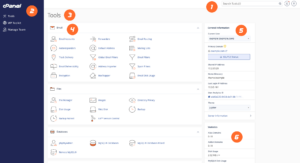Emulators are software that allow you to replicate the functionality of one system on another, enabling you to run applications or games meant for a different platform on your computer. Here’s how to install emulators:
1. **Research and Choose an Emulator:**
Search online for the emulator that suits your needs. Popular options include Bluestacks for Android apps and RetroArch for various gaming consoles.
2. **Download the Emulator:**
Visit the official website of the chosen emulator and download the installation file compatible with your operating system (Windows, macOS, Linux).
3. **Install the Emulator:**
Locate the downloaded file and double-click it to start the installation process. Follow the on-screen instructions to complete the installation.
4. **Configuration (if needed):**
Some emulators might require initial setup or configuration. This could involve selecting preferences, setting up controls, or linking accounts (for app emulators).
5. **Download BIOS (if required):**
Certain console emulators, like those for PlayStation or Nintendo, may need a copy of the original system’s BIOS files to function correctly. Ensure you acquire these legally.
6. **Acquire ROMs or Game Files:**
For gaming emulators, you’ll need game ROMs (copies of game cartridges or discs). Download these from legitimate sources and store them in an organized directory.
7. **Load and Play:**
Open the emulator and navigate to the option to load a ROM or game file. Locate the file you downloaded earlier and load it into the emulator.
8. **Adjust Settings (Optional):**
Emulators often provide options to adjust settings like graphics, sound, controls, and save states. Explore these settings to optimize your experience.
9. **Troubleshooting and Updates:**
If you encounter issues, refer to the emulator’s documentation or online forums for troubleshooting tips. Regularly check for emulator updates to ensure stability and new features.
10. **Respect Copyright and Licensing:**
It’s important to use emulators and ROMs legally. Only use emulators for games you own or have permission to use.
Remember that while emulators offer the ability to run different software on your computer, they should be used responsibly and within the bounds of legality.
Visit HelloRDP for more information.








can i take two 5mg cialis at once
can i take two 5mg cialis at once